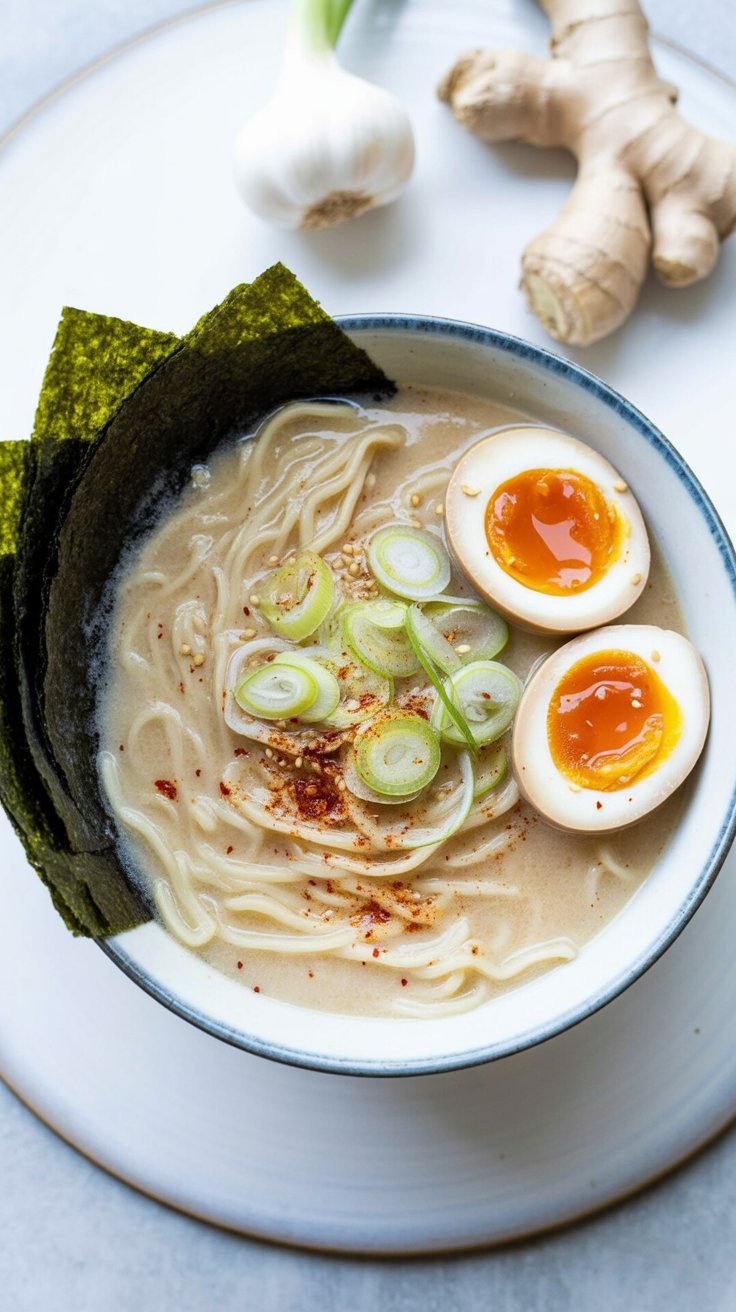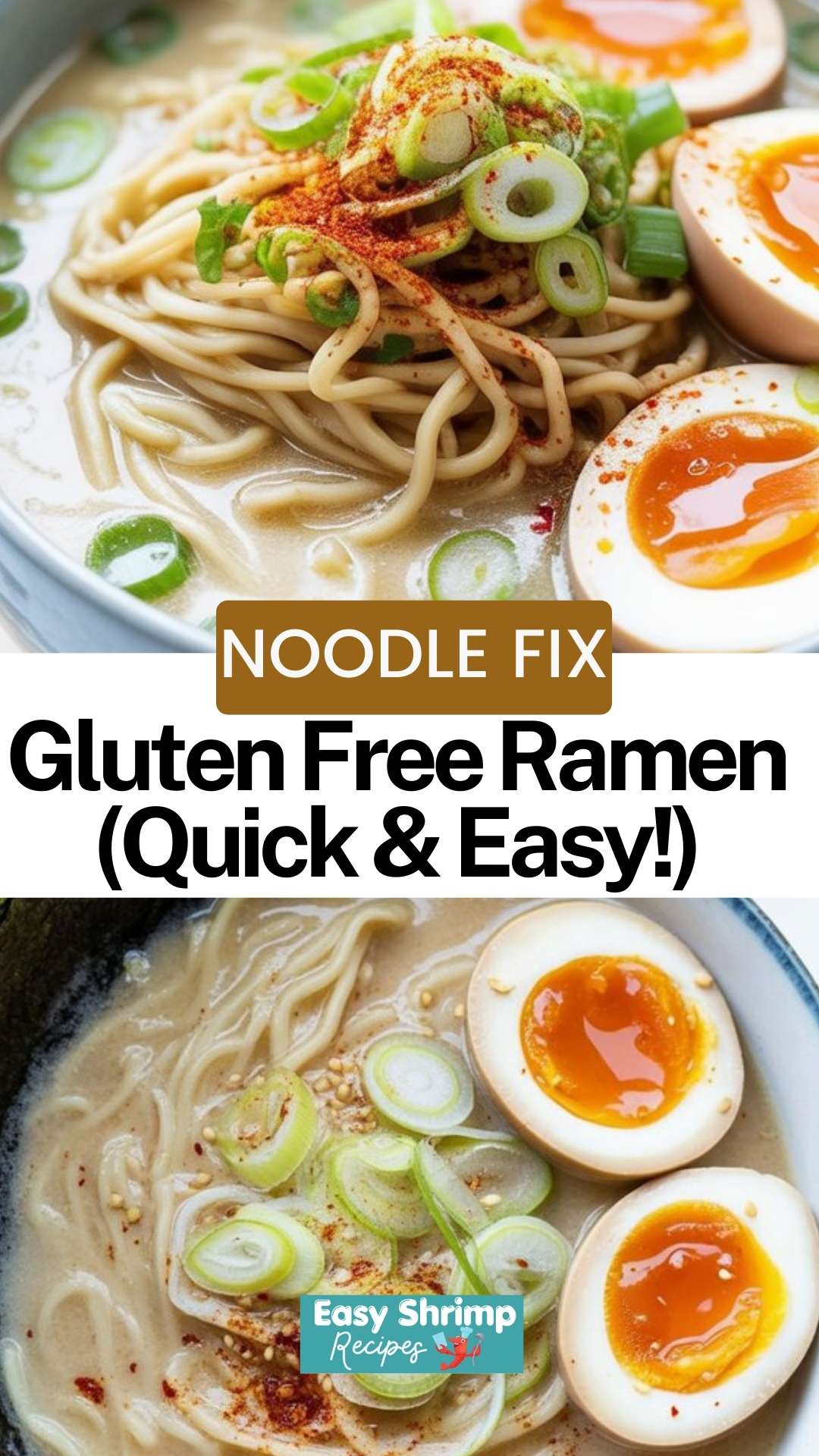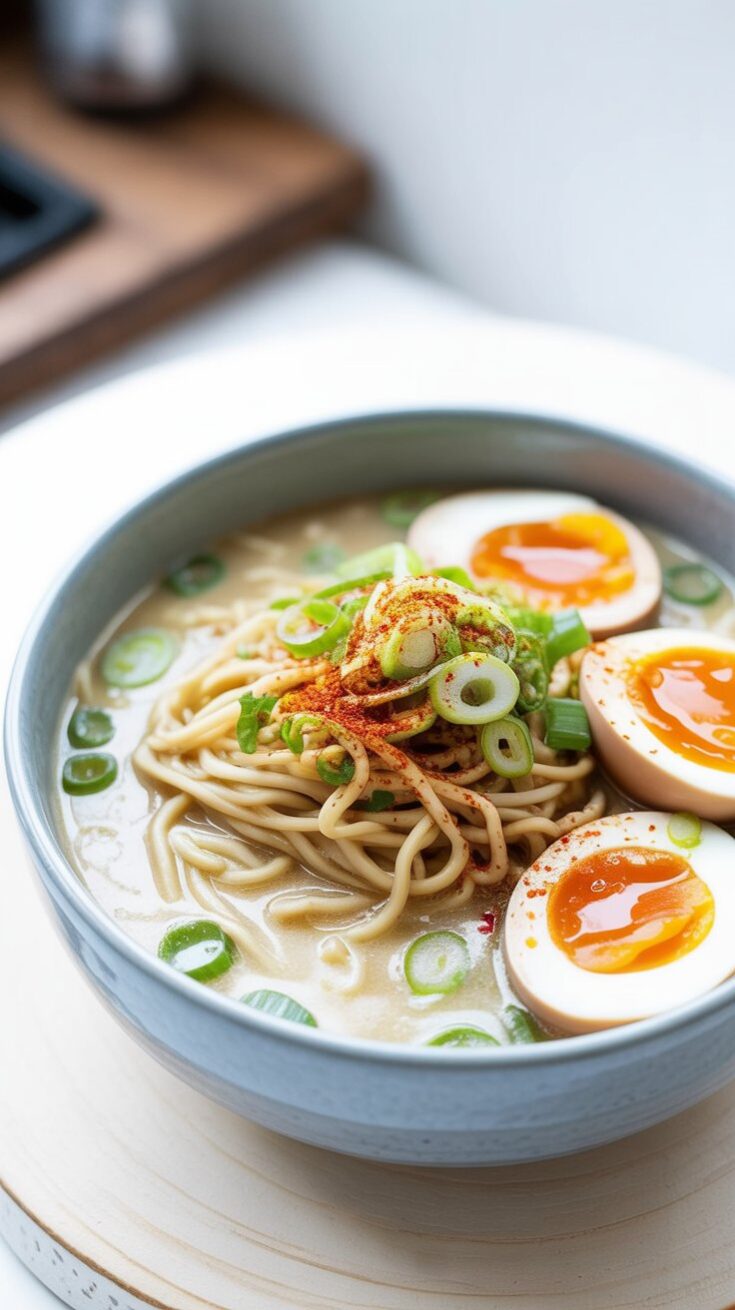There are few things as comforting as a steaming bowl of ramen on a chilly day. For years, I thought I had to give up on my favorite noodle soup after discovering I couldn’t tolerate gluten. Those instant ramen packets I grew up on were out of the question. But then, after experimenting in my kitchen on a cold winter evening, I found my solution: gluten free ramen that’s quick, hearty, and ready in just 15 minutes. It’s now one of my weeknight lifesavers, and I’m excited to share it with you.

Why This Recipe Feels Like A Hug In A Bowl
If you’re gluten free, you know how tricky it can be to enjoy the same comfort foods everyone else does. Dining out often means double-checking menus, asking awkward questions, and sometimes just skipping your old favorites. That’s exactly why I keep recipes like this ramen in my back pocket.
The broth is creamy without being heavy, thanks to unsweetened soy milk. The ginger and garlic make it warming, almost like a homemade remedy for tired evenings. And the rice ramen noodles? They’ve got that chewy bite that makes ramen so addictive. The best part? It comes together almost as quickly as those instant packets we all loved as kids, but it feels like real food.
What You’ll Need In Your Kitchen
Gluten free ramen noodles – I usually grab the rice and millet ramen noodles from Costco, but smaller packs are available online and in most grocery stores. If gluten isn’t a problem for you, regular ramen noodles work too.
Broth – I switch between chicken broth, vegetable stock, or homemade bone broth depending on what’s in my fridge. Each one gives a slightly different personality to the dish—bone broth especially adds richness.
Unsweetened soy milk – This is the secret to that velvety broth. Just make sure it’s unsweetened. Trust me, vanilla-flavored ramen is not something you want to experience. If soy isn’t your thing, almond milk works too.
Tamari – My go-to gluten free soy sauce. It has the same deep umami kick without the gluten. Coconut aminos are another great alternative if you’re both gluten and soy free.
Rice wine vinegar – It brightens the broth with a little tang. I sometimes use mirin when I want a slightly sweeter, more traditional touch.
Garlic, ginger, and green onion – These three are the heart of the broth. Fresh is best, but I’ll admit I’ve reached for garlic powder in a pinch on a busy Tuesday night.
Sesame oil – A drizzle of toasted sesame oil rounds out the flavor. It’s nutty, cozy, and smells like ramen should.

Practical Tips From My Kitchen
-
Cook noodles separately – I learned this after a few gummy disasters. Keeping them out of the broth until serving makes the soup cleaner and tastier.
-
Don’t overcook the noodles – They continue to soften in the hot broth. I often pull them out a minute before the package says.
-
Season at the end – Tamari and broth can vary in saltiness. I taste right before serving and only add extra salt if needed.
-
Scaling up – This recipe is written for one, but I often double or triple it for family dinner. Cook a big pot of broth, make a heap of noodles tossed in sesame oil, and let everyone build their own bowls.
Fun Toppings To Play With
Ramen is like a blank canvas, and toppings make it come alive. My weeknight go-to is a jammy soft-boiled egg, shredded chicken, and a sprinkle of green onions. But here are more ways to build your bowl:
-
Protein: Shrimp, tofu, pork belly, leftover rotisserie chicken, or thinly sliced beef.
-
Veggies & greens: Baby spinach, bok choy, napa cabbage, steamed broccoli, corn, mushrooms.
-
Extras: Nori sheets, chili crunch, furikake, fried garlic, or a drizzle of chili oil.
Pro tip for eggs: boil them for 7 minutes, shock them in ice water, peel gently, and slice. The yolk stays golden and creamy every single time.
Variations I’ve Tried (And Loved)
-
Spicy kick – Stir in chili garlic paste or top with chili oil.
-
Miso twist – Add a spoonful of miso paste into the broth for earthy depth.
-
Mushroom ramen – Saute shiitakes with the garlic and ginger before adding broth.
-
Soy free – Swap tamari for coconut aminos and soy milk for almond milk.
-
Extra noodles – Sometimes one block of noodles isn’t enough, so go for two if you’re hungry.
Make Ahead And Storage Tips
This soup is best eaten fresh because noodles left in broth get soggy fast. That said, you can absolutely make it work for meal prep.
Here’s how I do it:
-
Cook a batch of broth and keep it in a jar in the fridge for up to 4 days.
-
Cook the noodles separately, toss them with sesame oil, and store them in a container. They’re good for about 2 days.
-
When ready to eat, heat the broth, add the noodles, and finish with toppings. It feels freshly made without the last-minute scramble.

Frequently Asked Questions
Are ramen noodles naturally gluten free?
No, traditional ramen noodles are made with wheat flour. But rice-based gluten free noodles are widely available and make an excellent substitute.
Can I use soba noodles instead?
If they’re 100% buckwheat soba noodles, yes—they’re gluten free. But many soba noodle brands mix wheat flour in, so always double-check the label.
What’s the best gluten free noodle brand for ramen?
I personally like Lotus Foods rice ramen. They’re chewy, hold up well in broth, and don’t turn mushy too quickly.
Can I freeze gluten free ramen?
I wouldn’t recommend freezing it with noodles, but the broth freezes beautifully. Just defrost, reheat, and add freshly cooked noodles.
Gluten Free Ramen (Quick & Easy!)

When the weather turns chilly, nothing hits the spot quite like a steaming bowl of ramen.
Ingredients
- 1 cup unsweetened soy milk (unflavored; almond or oat milk also work)
- 1 cake gluten free rice ramen noodles (cooked per package directions)
- 1 teaspoon sesame oil (or coconut, avocado, or another neutral oil)
- 1 cup low sodium chicken or vegetable broth
- 2 tablespoons gluten free tamari (or soy sauce or coconut aminos)
- ½ teaspoon freshly minced ginger (about ½ inch piece)
- ½ teaspoon minced garlic (from 1–2 cloves)
- 1 tablespoon rice wine vinegar or mirin
- 1 green onion, thinly sliced, white and green parts divided
Optional add-ins:
- chili oil, chili crisp, bok choy, spinach, broccoli, corn, microgreens, tofu, soft-boiled egg, shredded chicken, pork belly, shrimp, togarashi, furikake, nori, sesame seeds
Instructions
- Warm a small pot over medium heat and drizzle in the sesame oil. Add the sliced white part of the green onion along with the garlic and ginger. Stir and cook until the mixture becomes fragrant, about two to three minutes.
- Pour in the broth and soy milk, giving it a gentle stir. Allow the liquid to come to a soft simmer and let it cook for five minutes until hot and well combined.
- Remove the pot from the heat and stir in the tamari and rice wine vinegar. Add the cooked ramen noodles and mix them gently so they soak up the broth. Finish by garnishing with the reserved green onion tops and any toppings you love.
Nutrition Information
Yield
1Serving Size
1Amount Per Serving Calories 2800Total Fat 135gSaturated Fat 33gTrans Fat 0gUnsaturated Fat 85gCholesterol 509mgSodium 7889mgCarbohydrates 249gFiber 24gSugar 63gProtein 156g
Easy Shrimp Recipes.com, occasionally offers nutritional information for recipes contained on this site. This information is provided as a courtesy and is an estimate only. This information comes from online calculators. Although allchickenrecipes.com attempts to provide accurate nutritional information, these figures are only estimates.
Final Thought
For me, this gluten free ramen is proof that comfort food doesn’t have to be complicated or off-limits. With a handful of pantry ingredients and 15 minutes, you’ve got a steaming bowl of cozy noodles that hits the spot every time. Whether it’s a solo dinner, a quick lunch between Zoom calls, or a family meal with extra toppings, it’s a recipe worth keeping close.

